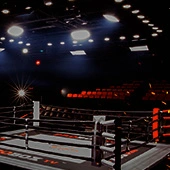By Keith Idec
Bernard Hopkins has no problem admitting he is biased in this instance.
The legendary fighter from Philadelphia is a partner in Oscar De La Hoya’s company, which promotes Canelo Alvarez. And by beating Gennady Golovkin on Saturday night, Alvarez prevented Golovkin from breaking Hopkins’ record for consecutive middleweight title defenses (20).
Hopkins’ allegiance aside, when he closely analyzed their riveting rematch he determined Alvarez (50-1-2, 34 KOs) did enough to edge Golovkin (38-1-1, 34 KOs).
Two judges – Dave Moretti and Steve Weisfeld – agreed with how Hopkins saw the action and scored their fight for Alvarez by the same score, 115-113. They overruled judge Glenn Feldman, who scored it a draw (114-114), and Alvarez won a 12-round majority decision at T-Mobile Arena in Las Vegas.
Hopkins broke down the Alvarez-Golovkin rematch during a segment in the new episode of HBO’s “The Fight Game With Jim Lampley,” which premiered Wednesday night.
“Two weeks ago, I told you that when two fighters are as evenly matched as Canelo and Triple-G, it will come down to who was able to learn the most from the first fight,” Hopkins said. “And well, I was right. For his part, Gennady Golovkin did start faster than in the first matchup. He established his jab from the first bell and took the opening round on all three scorecards. In fact, he out-worked Canelo on the jab all night and landed more punches overall.”
CompuBox gave Golovkin a slight advantage in overall punches landed (234-of-879 to 202-of-622). CompuBox counted more jabs for Golovkin (118-of-547 to 59-of-256) and more power shots for Alvarez (143-of-366 to 116-of-332).
Kazakhstan’s Golovkin again failed to attack Alvarez’s body. According to CompuBox, he landed just six body shots in the entire fight, two fewer than in their first fight a year ago.
Conversely, Alvarez hit Golovkin with 46 body shots Saturday night, two more than in their first fight.
Mexico’s Alvarez also often forced Golovkin to fight moving backward, a position from which Golovkin isn’t accustomed to succeeding. The newly crowned WBA/WBC/IBO middleweight champion rarely fought off the ropes and didn’t move nearly as much during this highly entertaining encounter as he did when they fought to a controversial draw last September 16 at T-Mobile Arena.
“The thing is, fights are not judged on volume alone,” Hopkins explained. “To understand the outcome of this fight is to understand the minds of the judges. Judges like to reward the aggressor and Canelo Alvarez used this fight as an opportunity to flip the script on Triple-G. He controlled the center of the ring, walked him down and dictated the pace of the action. Canelo forced Triple-G to fight off his back foot. And since Gennady is not a natural counter-puncher, he was never really able to settle down into the role of the matador.
“Judges also like variety. Once again, Gennady ignored the body. But Canelo went there often, punishing his opponent when he did. And Canelo kept Triple-G guessing with a diverse attack. While Golovkin’s jab set the pace throughout, judges and fans like flashy power punches. When the rounds are razor close, it’s the eye-catching shots that win the day. And when the fight comes down to one round in the difference of the scores, that can be powerful. When it came down to it, Canelo’s game plan was better than his opponent. And he did what he had to do to get the decision. But I’m not convinced he did enough to end the debate. Count me amongst those that want to see the top two middleweights do it one more time.”
Keith Idec is a senior writer/columnist for BoxingScene.com. He can be reached on Twitter @Idecboxing.



